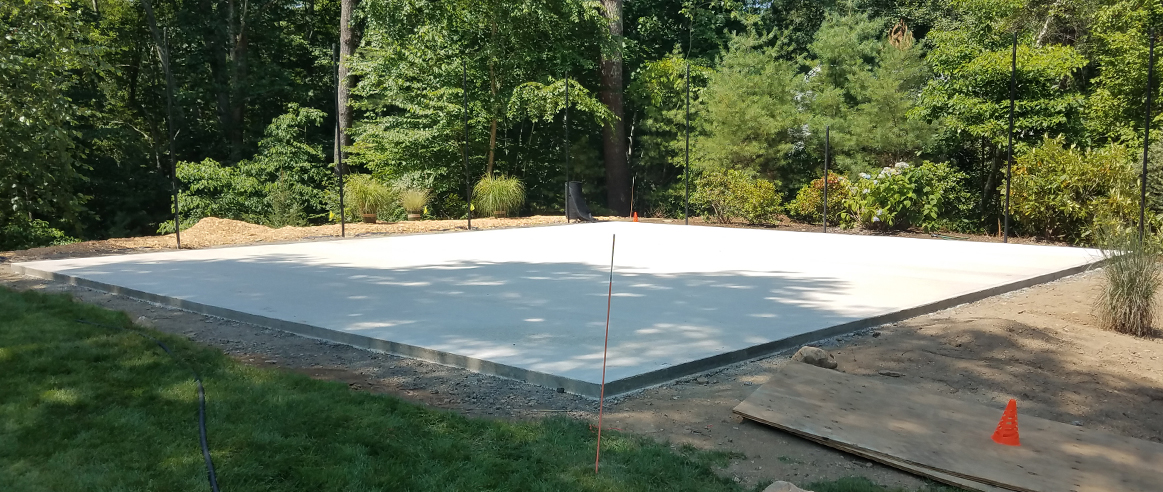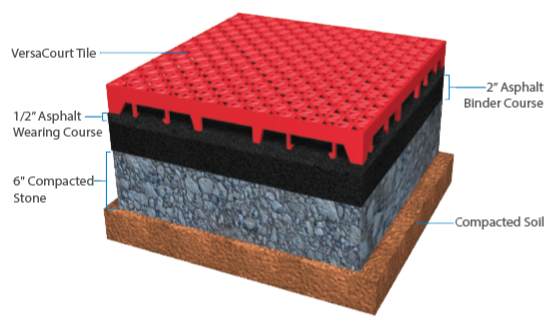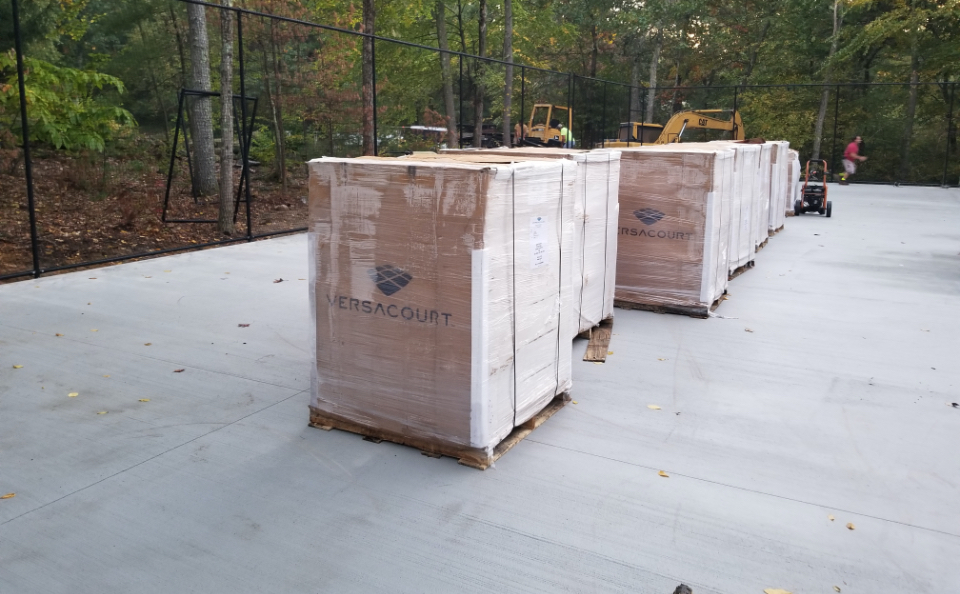

Interlocking Garage Floor Tiles

VersaCourt is a suspended tile surface designed to be assembled on top of a flat, hard subsurface. Many of the courts that we sell will go over existing concrete slabs, driveways or other surfaces so the subsurface preparation is limited.
It is important to consider a couple of key issues:
If an existing subsurface does not exist, we typically recommend installing a concrete base for most basketball, volleyball and multi-sport game courts due to its performance, durability and longevity. However, other subsurface options may be considered.
The VersaCourt Foundation Panel is the ideal alternative to installing a concrete or asphalt pad…especially for homeowners and facility operators faced with impervious surface regulations. It is a permeable sub-base that not only allows homeowners to comply with these regulations, but it’s also safer, more durable and more environmentally friendly than concrete or asphalt.

The following concrete recommendations are for informational purposes only and VersaCourt is not responsible for concrete design specifications of installation. Specific requirements for concrete design and installation should be confirmed by a local Professional Engineer and/or Licensed Contractor.

| Pavement Thickness (Inches) | Max. Joint Spacing (Feet) |
| 3.5" | 6' |
| 4" | 10' |
| 4.5" | 10' |
| 5" | 12' |
| 6" | 15' |
Although we recommend a steel reinforced concrete base for our clients, VersaCourt tiles can also be placed over an asphalt base pad. Customers may choose to install asphalt, as the initial cost can be lower than a typical concrete base.
However, it is important to note that asphalt is more susceptible to cracks and fractures and will eventually deteriorate with repeated freeze-thaw cycles. This will require additional maintenance and repairs, which can be costly.

There are instances when costs, ordinance restrictions or permeable surface limits require our customers to consider alternative base options. The most common option is to place the court tile on a compacted stone surface. We offer a unique recycled rubber underlayment product for placement between the rock and the tile and recommend that balls be slightly overinflated to accommodate for the softer surfacing. **VersaCourt does not recommend utilizing a stone base for Pickleball or Tennis applications.

With our interactive court designer, you can create the court of your dreams. Mix & match colors, add game lines and accessorize.
Payment options through Affirm are subject to an eligibility check and are provided by these lending partners: affirm.com/lenders.
